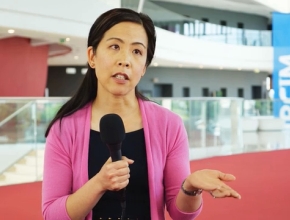References
Arabi YM, Al-Hameed F, Burns KEA, et al; Saudi Critical Care Trials Group. Adjunctive Intermittent Pneumatic Compression for Venous Thromboprophylaxis. N Engl J Med. 2019 Feb 18. doi: 10.1056/NEJMoa1816150. [Epub ahead of print] PubMed PMID: 30779530.CLOTS (Clots in Legs Or sTockings after Stroke) Trials Collaboration, Dennis M, Sandercock P, Reid J, Graham C, Forbes J, Murray G. Effectiveness of intermittent pneumatic compression in reduction of risk of deep vein thrombosis in patients who have had a stroke (CLOTS 3): a multicentre randomised controlled trial. Lancet. 2013 Aug 10;382(9891):516-24. doi: 10.1016/S0140-6736(13)61050-8. Epub 2013 May 31. Erratum in: Lancet. 2013 Aug 10;382(9891):506. Erratum in: Lancet. 2013 Sep 21;382(9897):1020. PubMed PMID: 23727163.
Roman Jaeschke, MD, MSc: Good morning, welcome to another edition of McMaster Perspective. I would like to introduce to you one of the most prolific critical care researchers in the Middle East and beyond, Doctor Yaseen Arabi. Would you be so kind to tell us a few words about where you work and what you do?
Yaseen Arabi, MD: Thank you very much for this kind introduction. It is my pleasure. My name is Yaseen Arabi. I am the chairman of the Intensive Care Department at King Abdulaziz Medical City and professor in the College of Medicine at King Saud bin Abdulaziz University for Health Sciences and King Abdullah International Medical Research Center. I also chair the Saudi critical care trials group.
Roman Jaeschke: Just a few days ago you published a trial that will probably change what we do in critical care in terms of venous thromboembolism (VTE) prophylaxis. Could you tell us what led to this trial?
Yaseen Arabi: Deep vein thrombosis (DVT) remains a major issue for hospitalized patients, especially those who are in the intensive care unit (ICU). It is associated with significant morbidity and mortality. There has been a lot of effort trying to prevent and reduce the risk of DVT. Pharmacologic prophylaxis is presently the standard of care, based on good randomized controlled trials showing that it reduces the risk of DVT by about 50%.
In addition to the pharmacologic prophylaxis, which uses predominantly unfractionated heparin and low-molecular-weight heparin, there are pneumatic compression devices, which work by improving blood flow in the lower limbs. These devices have been tested in relatively small studies. The largest study was done in patients with stroke and was called the CLOTS (Clots in Legs or Stockings after Stroke) 3 trial. In this trial patients were randomized to a pneumatic compression device versus no pneumatic compression device. The results showed a reduction in DVT by about 33%. Among these hospitalized stroke patients only 25%, by nature of their disease, were on some type of anticoagulants, whether prophylactic or therapeutic doses. The others were not. This study was done predominantly in a population that is not receiving pharmacologic prophylaxis.
Our study addressed a very relevant question of whether we can prevent DVT by adding pneumatic compression devices to pharmacologic prophylaxis in critically ill patients, a population that has not been studied very well in this regard.
Roman Jaeschke: If I remember correctly, in the last few iterations of the Surviving Sepsis Campaign, which made recommendations for the use of thrombotic prophylaxis in critical care, there was a suggestion to add those devices to pharmacologic prophylaxis. It was always considered an extrapolation from orthopedic literature and the evidence behind it was always considered low [quality]. I suspect that is what had led to your—very relevant—trial. Could you tell us how you have done it and what you found?
Yaseen Arabi: The trial was done in critically ill patients in 20 sites in 4 countries. It was a randomized controlled trial. We enrolled patients who had been already receiving unfractionated heparin or low-molecular-weight heparin. Patients were enrolled within 48 hours of ICU admission and were randomized to receive a pneumatic compression device in addition to pharmacologic prophylaxis (the first arm) or to continue pharmacologic prophylaxis alone (the second arm). Patients in the trial had ultrasound examination of the lower limbs within 48 hours of enrollment and then twice weekly until day 28 of the trial. So there was frequent ultrasound surveillance, which helped us look very closely at the incidence of proximal lower limb DVT.
Roman Jaeschke: What have you found, in general? Maybe we could go into detail in the next interview.
Yaseen Arabi: The primary outcome of the trial was incident proximal lower limb DVT. What we meant by this was DVT that was detected after the first ultrasound. So if DVT was identified on the first ultrasound, we considered this to be prevalent, or preexisting, DVT. The primary outcome was DVT that occurred after the first ultrasound.
We found that the addition, or adjunctive use, of pneumatic compression devices did not lead to reduction in DVT. In fact, the incidence of DVT was almost identical [in both groups]. We did multiple sensitivity analyses and subgroup analyses, which showed very consistent findings with the primary analysis.
Roman Jaeschke: I think we will finish here. It is quite a surprising result to me, as we are using a lot of those devices in our ICU. If you do not mind, we will talk about details of your study in our next interview. Thank you for now, and thank you sharing this surprising result. We will talk again soon.
Yaseen Arabi: Thank you very much.
 English
English
 Español
Español
 українська
українська











